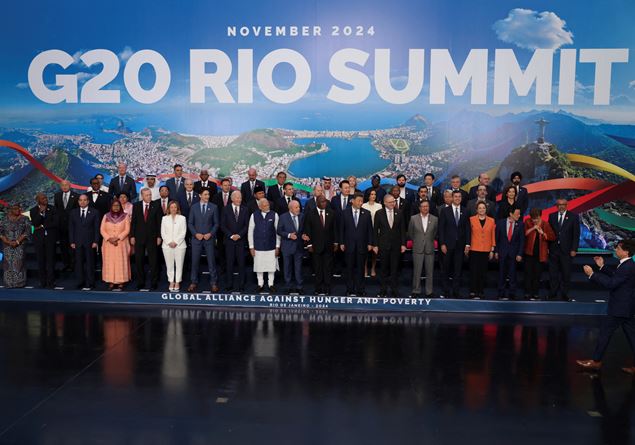
Acute food insecurity and the risk of famine are on the rise and the first to be affected are children, who suffer the effects of hunger already in the first days of life or even before birth. Child malnutrition is in fact closely related to maternal malnutrition and I’m beyond 9 million women and girls suffer from acute malnutrition during pregnancy and breastfeeding, with serious damage to the health of newborns.
The situation worsens further with growth: over 36 million children under 5 are malnourished and among these over 9 million suffer from serious malnutrition. Furthermore, from the CESVI Global Hunger Index, it emerges that in In 27 countries, levels of stunting are so high that they are of very worrying public health significance: the most serious situation is recorded in Burundi, Yemen and Niger, where approximately half of children suffer a delay in normal development due to malnutrition. In recent years, the prevalence of stunting has also increased by at least 4 percentage points in Afghanistan, Argentina, Mongolia, Niger and Yemen. Child wasting is particularly high in India, and is high and rising in Sudan and Yemen.
We are still very far from the ‘Zero Hunger’ goal by 2030. This year too, millions of children around the world have suffered from hunger with outcomes that can be fatal. In five African countries, infant mortality continues to be above 10%: in Somalia, Niger, Nigeria, Chad and Sierra Leone one in ten children does not live beyond the age of five.
THE IMPACT OF WARS ON MINORS
The situation is aggravated by wars and armed conflicts: almost 2 billion children live in a country at war and around 473 million – more than one in six children – live within 50 km of armed clashes. The most serious situation is recorded on the African continent, where 181 million children live in countries involved in armed crises. In five Sub-Saharan African countries, more than 1 in 10 children die before the age of five, and this is the area that holds the highest global neonatal mortality rate (40%). The situation is particularly critical in Sudan, a country facing a tragic hunger emergency and where CESVI is intervening: almost here 9 million children live in conditions of serious food insecurity and over 700 thousand children under the age of 5 are at risk of death.
In the Middle East, the highest number of children living in conflict zones compared to the entire child population (32.1%): in Gaza Strip, in the last year almost half (44%) of the total civilian victims registered were under the age of 14with the maximum incidence in the range between 5 and 9 years. In less than a year, 96% of the population (2.15 million people) has fallen into catastrophic or acute food insecurity, clean water has become unobtainable and poor hygiene conditions have caused health problems for 90% of children under 5 years. Despite the enormous difficulties in accessing humanitarian workers, CESVI has been supporting the population of the Gaza Strip for over a year through the water distribution (reaching tens of thousands of people and equipping 7 camps with tanks), food (delivering food parcels and 18 tons of Plumpy’Nut, therapeutic food for the treatment of acute malnutrition) and with interventions, including structural ones, to restore the sewage and latrine systemfor the improvement of hygienic-sanitary conditions in shelters.
CHILDHOOD AND CLIMATE SHOCKS
In the World 1 billion children are at risk due to the consequences of the climate crisis: 739 million live in areas with high or extreme scarcity of drinking water and 436 million in areas where access to water sources is difficult.
The impact of climate shocks extends to every area of children’s lives. In six years plus 43 million children, about 20 thousand a day, they were forced to abandon their homes due to weather disasterswith strong repercussions on all aspects of their lives, including education: every year 40 million minors are forced to interrupt their studies due to the destruction of school buildings.
The situation is particularly critical in the area of Horn of Africagrappling with an extreme climate crisis, marked by alternating long periods of drought and devastating floods. In Somalia, the level of malnutrition is now very serious and consecutive seasons of low rainfall, security concerns, the effects of the war in Ukraine and the consequences of climate change have pushed the most vulnerable communities to the edge. The infant mortality rate in the country is alarming: over 3 out of 100 children die within 28 days of life and 4 out of 100 before the age of 4. CESVI has been operating in the country for many years respond to the nutritional needs of the most vulnerable, through 3 health centers in which she deals with care and nutrition for newborns and mothers.
GLOBAL HUNGER INDEX 2024: ALARMING OR ACUTE HUNGER IN 42 COUNTRIES
The Global Hunger Index (GHI) measures hunger at the global, regional and national levels based on four indicators: malnutrition, child wasting, child stunting and under-five mortality. QThis year the world’s GHI score is 18.3, which is moderate hunger. In 6 countries (Somalia, Burundi, Chad, Madagascar, South Sudan and Yemen) an alarming level of hunger was found and in a further 36 a serious level of hunger. «The progress made in the fight against hunger between 2000 and 2016 shows that a substantial improvement is possible, even in a reasonable time – underlines the Director General of CESVI, Stefano Piziali – but unfortunately since 2016, when the global GHI score was 18.8 , for the world as a whole and for many countries, progress has stalled and in some countries there have even been reversals of trend».
In two thirds of the 130 countries examined in the 2024 edition of the GHI, malnutrition has not improved or has even increased. In particular, in 22 countries with moderate, severe or alarming GHI 2024 scores, a worsening was detected compared to 2016 and in 5 countries (Venezuela, Syria, Libya, Jordan and Fiji) even compared to 2000. Based on the current GHI projections, at the current rate, are at least 64 countries that they will not reach low levels of hunger, much less the Zero Hunger goal, by 2030. In fact, it is estimated that, at the current rate, in 2030, 582 million people will still be chronically undernourished, half of them in Africa; a number comparable to the undernourished population in 2015, the year in which the world committed to eliminating hunger by 2030.
Furthermore, it emerges from the GHI that Acute food insecurity is rapidly worseningwith famine conditions on the rise, in several states and territories, including Gaza, Sudan, Haiti, Burkina Faso, Mali and South Sudan and that only in a small number of countries (Bangladesh, Mongolia, Mozambique, Nepal, Somalia and Togo) have significant improvements been recorded, although excessively high levels of hunger continue to exist. In Latin America and the Caribbean The slowdown in growth it also increased between 2016 and 2023, with critical situations in the territories of Haiti, Brazil and Argentina. Haitiin particular, is among the countries with the largest increases in GHI scores between 2016 and 2023, mainly due to rising malnutrition: hunger levels are rising dramatically, while the country faces a series of concomitant shocks, including including erratic rainfall, inflation and political turmoil that have generated gang violence and internal displacement.
Photo @Cesvi









